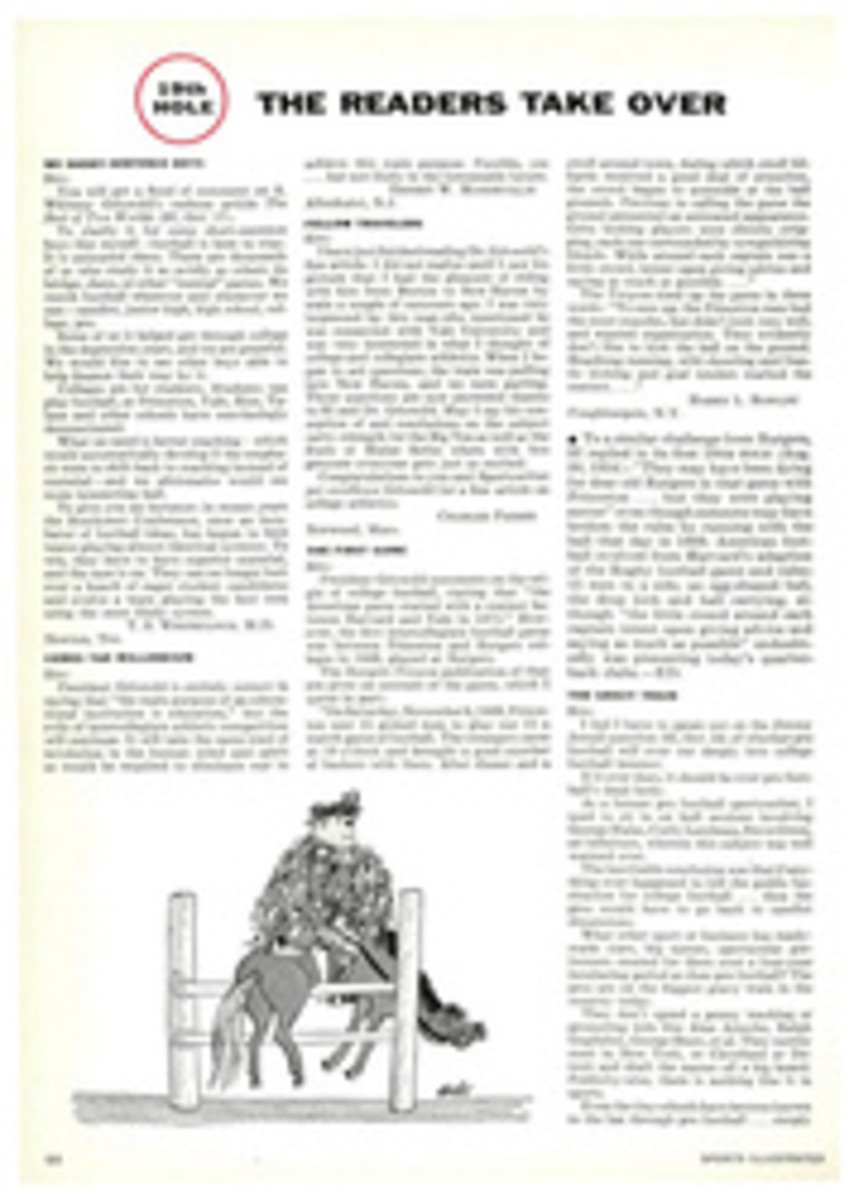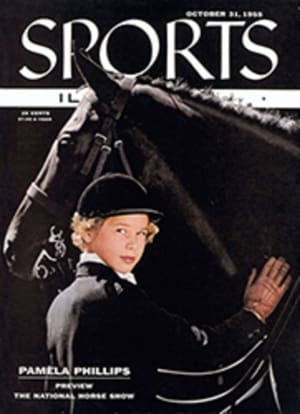
RECORDS FELL IN ROARING WAKES THIS YEAR AS THE UNLIMITED HYDROPLANES HAD BIGGEST SEASON YET
One muddy Saturday afternoon this summer, Guy Lombardo stood teetering on a boat cradle beside the Detroit River. He looked with mournful eyes at Tempo VII, his unlimited hydroplane that drifted stone dead in the water a few yards offshore. On board, Driver Danny Foster grimly tried to start Tempo's Allison engine. Tempo snorted angry smoke rings from her exhausts, shot ahead a few yards and died. On the fifth try, the boat caught the proper beat and Foster was off to the races, in this case to the Silver Cup races which Tempo VII eventually won. Lombardo relaxed and flashed the widest smile this side of heaven.
By nature, all unlimited inboard hydroplanes, the fastest, highest-powered racers in the water, are as contrary and spectacularly unpredictable as Tempo VII. Owners can spend thousands of dollars on their hydroplanes and then be knocked out of a race by a trivial accident. (Tempo VII bowed out of the Gold Cup race when she lost her 25¢ gas cap, and Foster found himself fighting a fire instead of driving a race.) More often than not, owning and racing an unlimited hydroplane means you take your sport with a dash of bitters.
Despite the frustration that is built into the sport, the past season which ended this weekend with the Governor's Trophy at Madison, Ind. was the biggest, grandest, noisiest and fastest on record. The American Power Boat Association registered a record number of 24 competing boats (14 from Detroit) and another eight not ready for competition. Seven of the boats ready to race were new to the water this year—another record. But the year's biggest record came last month when Jack Bartlow roared George Simon's Miss U.S. over the Potomac at Washington to become the first driver ever to average over 100 mph in a race.
Before the season started this spring, everyone knew it would be a record breaker. The question was who would break the records. Out in Seattle, Stan Sayres still had his two aces, Slo-Mo-Shuns IV and V. They had won every Gold Cup since 1950. But the designer of the Slo-Mos, Ted Jones, had broken with Sayres and turned out two new three-pointers—Miss Thriftway, owned by Seattle Groceryman Bill Rhodes, and Rebel Suh. Jones was determined to buzz his old playmate deep into the waters of Lake Washington, and in this project he wasn't alone. For five years the proud Detroiters had tasted Sayres's spray. This year, they promised, the Gold Cup was coming back where it belonged.
In the second race of the year, the Detroit Memorial in June, 10 hydroplanes, their rooster tails riding high, streaked for the first turn and the biggest crack-up of the season. Five got there at the same time. Blinded by the cascade of water, the drivers fought for control. Johnny Ban in Horace Dodge's My Sweetie swung out of control and plowed under Tempo VII. Ban was thrown from the cockpit and sailed across Tempo's bow. Three other boats were damaged in the melee. Foster finished a poor fifth. Gale IV and Gale V, which beat the pack through the first turn, finished first and second. In winning, Bill Cantrell in Gale IV set a new race record of 92.285.
It was chunky Lee Schoenith, however, driving Gale V, who came off with the year's honors. Schoenith won only one race all season, the Gold Cup, but by consistently good, if unspectacular, driving in a boat that managed generally to stay out of trouble, he amassed an APBA point total that proved too much for Foster, who came on fast to win four of the last five races.
The one race young Schoenith did win was not without its complications, which is putting it mildly. The Gold Cup is the World Series of unlimited hydroplane racing, and this was undoubtedly the most dramatic race in the history of the event (SI, Aug. 15). The drama started two days before the race when Lou Fageol, driving Slo-Mo-Shun V on a qualifying run, suddenly flipped clear out of the water, did a terrifying loop and landed right side up. Fageol was saved from drowning by two boys in a nearby outboard who held his head above water until the Coast Guard arrived.
With the famed Fageol out, the Gold Cup developed into a dogfight between Sayres's Slo-Mo IV, Miss Thriftway and Gale V. Some 250,000 spectators lined Lake Washington at Seattle that memorable August afternoon, and most of them went home satisfied that Rhodes's Miss Thriftway had kept the cup in town. They hadn't reckoned on higher mathematics, though. Miss Thriftway's Driver Bill Muncey, who had won two of the three heats and, along with Owner Rhodes, had been ceremoniously dumped into Lake Washington's chilly waters, were stunned a half hour later when the timers got their tape deciphered and discovered that Gale V had the best overall time, 4½ seconds faster than Miss Thriftway, and earned a bonus which boosted her to first place. Now it was Schoenith's turn to get dunked. He couldn't have been happier.
Gale V is owned by Lee's father, Joe Schoenith, president and owner of a large electrical supply company in Detroit. Joe Schoenith got interested in his spectacular hobby in 1949 and four years later won the high-point championship with Gale II. He has had steady success ever since. Last season Gale V came in first too, with Gale IV right behind.
Lee Schoenith and Cantrell always compete in the same races, but they have no teamwork tricks. "In fact," says Lee, "we like to race in separate heats. When we're together the only thing we try to do is not to run into each other. And we don't pass each other. Puts too much strain on the boat going over that wake."
Joe Schoenith's success has come through painstaking preparation. He has a crew of three working full time around the year on his Gales. Going to a race, Schoenith always packs along two extra Allisons plus other key equipment. In tune-up trials for the Gold Cup the Gales burned out three engines, tore up one gear box, ruined half a dozen wheels and still were ready for the main event.
Coming after the theatrics of the Gold Cup, almost any development in the racing season would be an anticlimax unless, as indeed it did, it involved the flamboyant Foster and Tempo VII. Tempo VII never got in tune in Seattle, but after that it was the scourge of the circuit. At Detroit's Silver Cup three weeks later, Foster roared to victory. Last month he won the President's Cup in Washington, this month the International Cup at Elizabeth City, and finally the Governor's Trophy at Madison. For all his heroics, Foster could not overcome Gale V's early point lead (see chart). However, there's always next year, which the hydroplaners promise will be the fastest one yet.
[originallink:10464001:42385]

